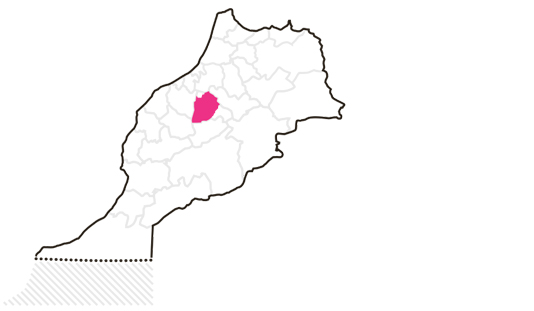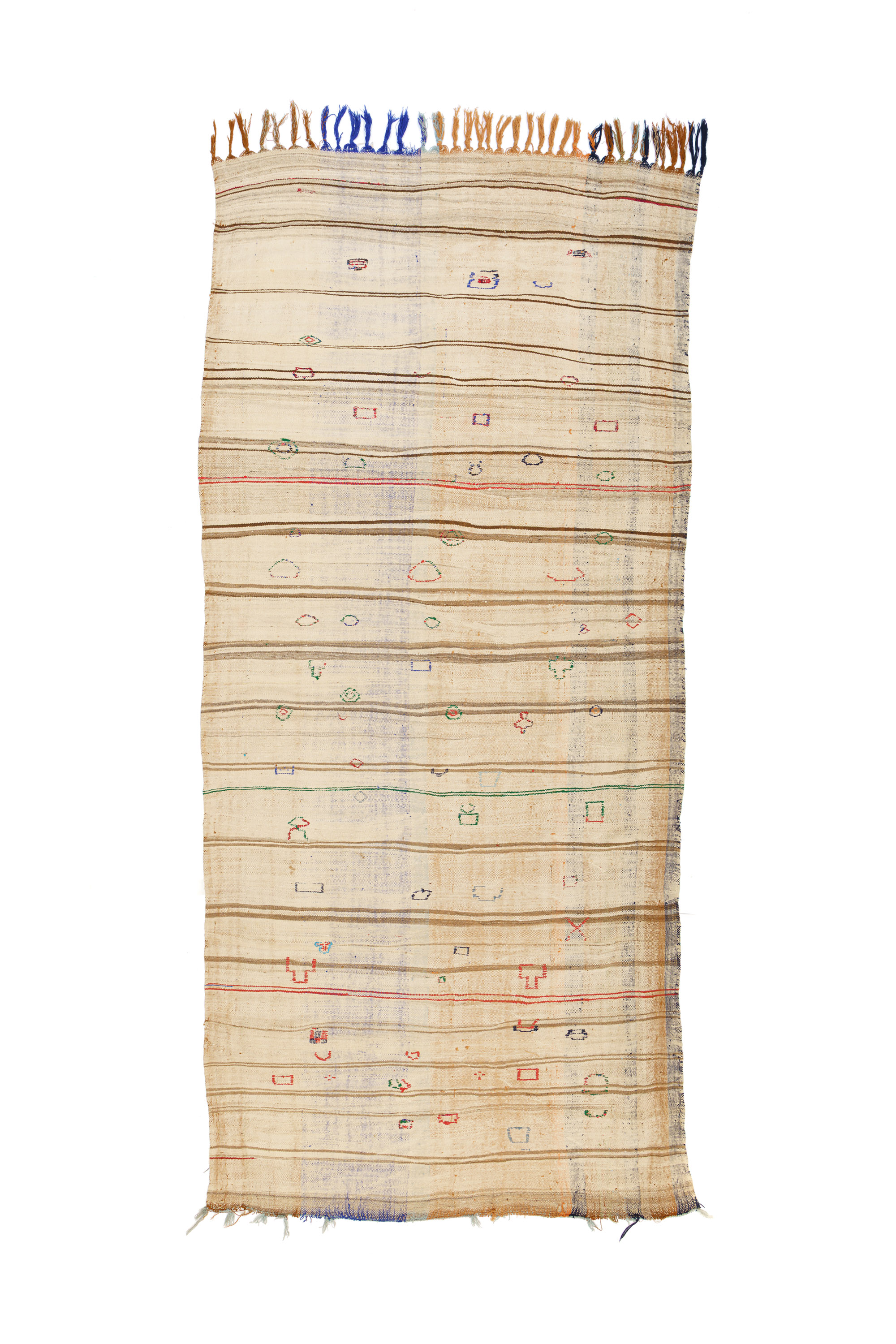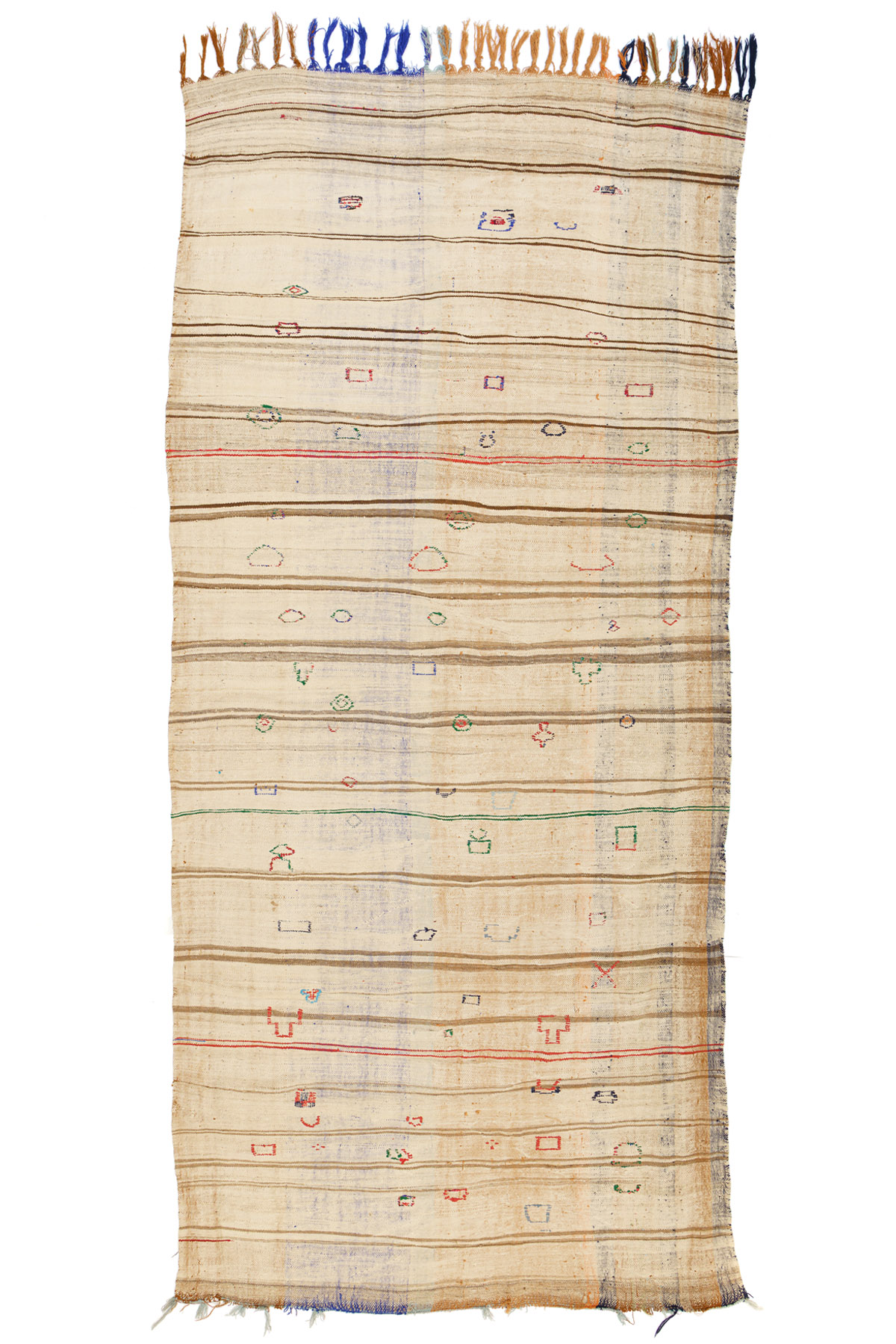BOUJAD KILIM N° BJ-HB
A striking hanbel, early 2000s, most likely from the inland region of Safi on Morocco’s Atlantic coast. The term “hanbel” in Arabic refers to a type of flatwoven textile, typically used as a blanket or floor covering. The main features of the design are undulating horizontal stripes in beige, along with a few in green and red, interspersed with various floating motifs created using the weft wrapping technique with recycled textile strips. Additionally, the transparency of the weft reveals the colorful warp threads forming vertical stripes that shimmer through the beige field, creating a subtle interplay of intermingling hues. It has medium fine weft and can be used as a floor covering with a rug pad underneath.
11'2" × 5'1"

BOUJAD rugs are made by Arab tribes and Arabised Berber tribes but they are named after the town of Boujad. The surrounding region of this town lies in the western foothills of the Middle Atlas adjoining the Zaer tribal territory in the extreme western corner, and the town Beni Mellal at the northernmost edge of Western High Atlas. The knotted rugs have typically a low pile and are often made with mixed materials such as wool, cotton, textile scraps and industrial yarns. Their designs are often highly individual containing Berber motifs, motifs found in Rabat rugs, distorted checkerboard fields and gestural abstract patterns- all in lively colors.
The term “Boujad” was established in the 1990s. However, more recent research shows that the production of rural rugs also extended farther west than previously recognized, reaching the Atlantic coast between Safi and Rabat, and even further north to Kenitra.

